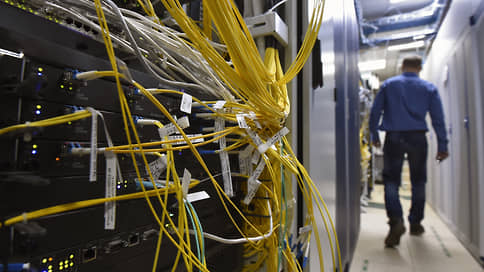State administration – Newspaper Kommersant No. 62 (7507) dated 11.04.2023
[ad_1]

Despite pessimistic forecasts, restrictions on the supply of equipment to the Russian Federation did not delay the development of data storage infrastructure too much. Analysts and market participants say that at the end of 2022, the number of rack spaces in commercial data centers increased by 10.8%, and in 2023 it will increase by another 7.4%. Demand for capacity is growing both among government agencies and companies, the largest data center operators are resuming suspended large construction projects. But at the same time, engineering and technological components for data centers are becoming more expensive: over the past year, prices have increased by 20-40% and the market expects continued growth.
In 2022, the number of rack spaces put into operation in data centers increased by 10.8%, reaching 58.3 thousand, Kommersant was told at the iKS-Consulting agency. Basically, additional capacities were introduced in the Moscow region – 4.5 thousand. According to the forecasts of the leading consultant of the agency Stanislav Mirin, in 2023 the number of rack spaces will increase by another 7.4%, to 62.6 thousand.
Igor Dorofeev, President of the Association of Data Center Industry Participants, agrees with these assessments: “The market has been growing and growing. Prior to the beginning of the NWO, the annual rate was 10-15%, now it has slowed down to 7%. I think that we will reach an annual increase of 10–15% by 2025.” Mr. Dorofeev adds that the number of data centers will increase due to the demand of government agencies, as well as business digitalization. A Kommersant source in the industry believes that most of the state order for placement in data centers, which provides a significant share of demand, “traditionally will be taken by Rostelecom, which builds in advance for state needs.”
After the outbreak of hostilities in Ukraine and the introduction of restrictions on the supply of equipment to Russia, the largest Russian data center operator had to revise plans. So, in June 2022, Rostelecom-DPC stopped projects for the construction of data centers in the regions. One of the reasons was the lack of components, including cooling systems, and uninterruptible power supplies (see Kommersant of April 28 and June 27, 2022).
But already in September, Yandex announced the construction of a data center for 3.8 thousand racks in Kaluga, the launch of the first zone is planned in the first half of 2023. In December, Atomdata-Innopolis found a contractor for the construction of a data center in Tatarstan, planning to commission the first phase for 1,000 racks in December 2023. Rostelecom-DPC also resumed development: they told Kommersant about the launch of a new data center in Moscow. According to a company representative, 512 racks have now been put into operation, and another 512 are planned to be launched before the end of the year. The total capacity of the data center will be 2,000 racks.
According to Kommersant’s interlocutor in the industry, there are no serious difficulties with the import of server equipment now. “There were problems with foreign climate equipment,” he confirms, “but now we consistently receive both components and the equipment itself: from China, Turkey and from European companies that continue to work with Russia.”
At the same time, the construction of data centers rose in price last year due to the fact that operators “had to switch to solutions that are alternative to those that are no longer supplied to Russia due to sanctions,” Mr. Mirin admits: “Due to the inaccessibility uninterruptible power supplies, cooling systems, etc., included in the projects, had to be redesigned for other equipment, which led to an increase in the total cost. The Association of Data Center Industry Participants predicted an increase in the cost of building data centers back in May 2022 (see Kommersant dated May 28, 2022).
The cost of engineering and technological components for data centers has increased by an average of 20-40% depending on the brand, and imported servers have risen in price by at least 30%, sometimes twice, says Pavel Kulakov, founder of the data center and cloud provider Oxygen. Moreover, he emphasizes, the price of domestic solutions has almost doubled. “Russian companies have begun to raise the cost of equipment due to the lack of competition, as well as the obligation of state-owned companies to purchase domestic equipment,” Mr. Kulakov explains. In his opinion, the cost of foreign equipment by the end of 2023 will increase by another 20% due to inflation and the growth of the dollar.
[ad_2]
Source link





